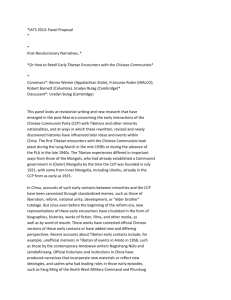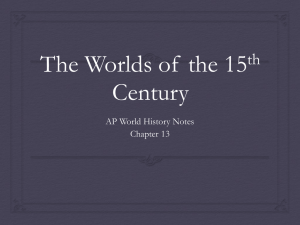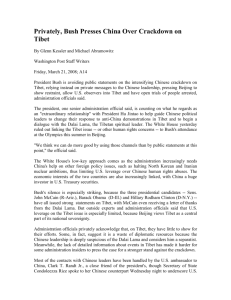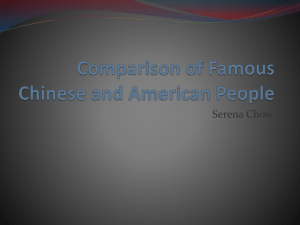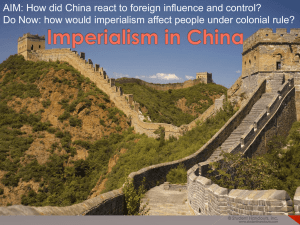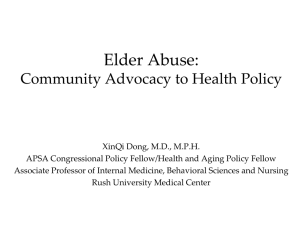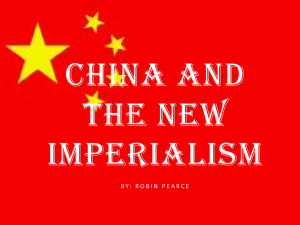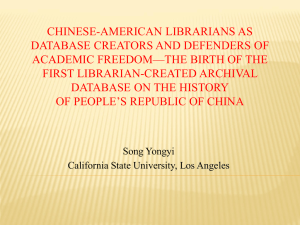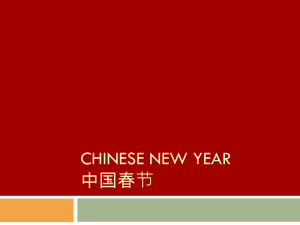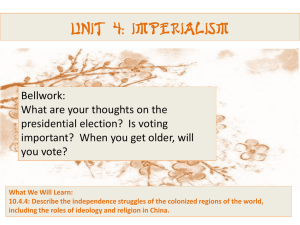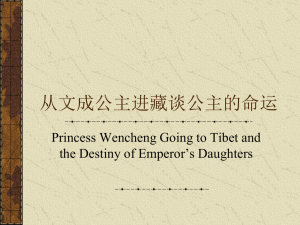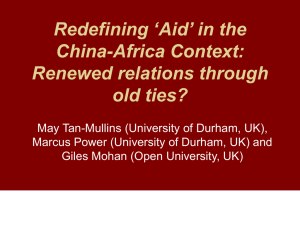File - AP Comparative Government
advertisement
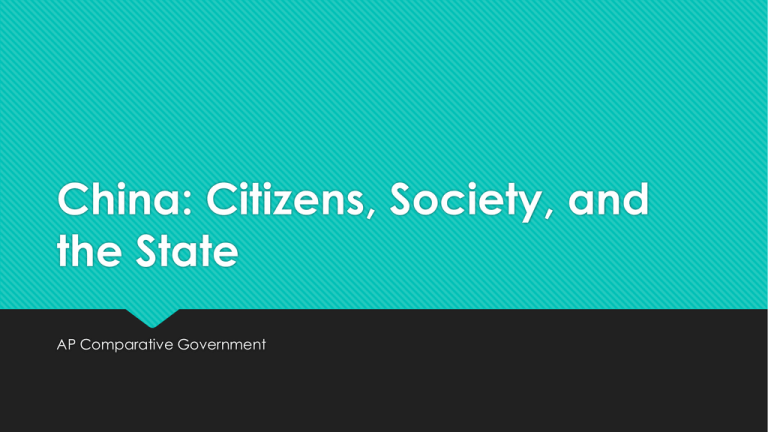
China: Citizens, Society, and the State AP Comparative Government Intro As changes in leadership in China have occurred, so have the relationships between leaders and the people Under Mao, virtually no civil society was allowed With a more market based economy, relationships had to be better established This is especially true as citizens lose sight of the value of communism in their daily lives The CCP now appeals to patriotism and to the traditional pride of being Chinese to pull citizens together Ethnic Cleavages China’s ethnic population is primarily Han Chinese These are the people who historically formed the basis of China’s cultural identity and established the empire and the country Minority groups comprise 8% of the PRC’s population, but area’s such as Tibet and Xinjiang have major minority populations that make up over 60% of China’s territory. These regions have a long history of resistance towards the Chinese government There are currently 55 officially recognized minority groups in China, but none of them are very large The majority of China’s minorities live on the borders of the country and in sparsely populated areas Because of the distance from major cities, it is feared that these area’s may try and join neighboring countries or revolt against the Chinese government Ethnic Cleavages The government’s officals policy towards minorities is to support and encourage the economic development of these groups, but to suppress expressions of dissent Most Chinese minorities reside in five autonomous regions known as Guangxi, Inner Mongolia, Ningxia, Tibet and Xinjiang. The Chinese constitution grants autonomous areas the right of self government in matters such as cultural affairs, but their authority is extremely limited Many of these groups appear to be content to be a part of the Chinese empire Ethnic cleavages Tibet: Tibet has a long history of separate ethnic identity The former government of Tibet never recognized the authority of the Chinese government The Dalai Lama, the spiritual leader of Tibet, fled after a failed revolution in 1959 The Dalai Lama then set up what is referred to as the Tibetan Government in exile, inside of the borders of India. This government has never been recognized as a legitimate government There were protests in 2008 protesting Chinese control of Tibet, but little has changed with Tibetan sovereignty over the last 50 years In 2011, the Tibetan Government in exile elected a prime minister, who took over government control from the Dalai Lama IN 2013, the Chines government announced a greater crackdown on Tibetan publications that promoted sovereignty Uyghurs: This group of Muslims, who are of Turkish descent, live very close to Afghanistan and Pakistan There has been some violence in the region and there is major ethnic tension, as the Uyghurs want to establish an independent state Urban-Rural Cleavages The majority of economic growth throughout China has taken place in the cities This disproportionate growth has redefined the meaning of “Two Chinas” There are both economic and social differences that exist between these two regions Rural areas have more protests because it is often believed that the government is not trying to protect the peoples interests Due to these protests, former Prime Minister Wen Jiabao announced a new government emphasis on “a new socialist country side.” This was instituted in 2006, and was a program designed to lift the rural economy and close gaps between rural and urban quality of life Political Participation Prior to 1949, it was Chinese tradition for people to be subjects of the government, not participants within the government. This lack of participation was redefined through the use of mass line Even with the use of mass line, traditional relationships and beliefs continue to shape the political process of China Pushes for democracy, an increase in religious freedom, and community ties over nationalism have also influenced Chinese politics Party Participation The Chinese Communist Party (CCP) is the largest political party in the world in terms of total formal membership, with about 58 million members They make up only about 8% of the Chinese population over the age of 18 Only those who are of age, are able to fully commit to the ideals of communism, and are willing to devote a great deal of time and energy to the party are allowed to join Party membership is growing in part because of the creation of the Youth League 73 million youths belong to the youth league Party Participation During the Maoist era, revolutionary cadres ruled the entire government These cadres depended on the loyalty and the ideological purity of the party After Deng Xiaoping took control of the government, technocrats began to take an ever increasing role within the government Currently all seven members of the current Standing Committee have academic and professional backgrounds in technical fields and five of them were trained as engineers 40% of the CCP is made up of members of the peasantry, but they are the single largest group The fastest growing membership category consists of officials, intellectuals, technicians and other professionals In 2001, under president Jiang Zemin, capitalists were able to join the CCP for the first time Between one quarter and one third of the CCP membership are now entrepreneurs, therefore changing the idea of what a cadre is Civil Society With modern technologies infiltrating Chinese culture, it has become harder for the Chinese government to stop the flow of information There has been an increase in the number of private organizations that exist to help fix social problems There are also some organizations designed to fight the government when the people are being harmed This is seen in protests to stop government-sponsored dam projects that would have flooded farmlands and peasant homes There have also been efforts by the government to be more transparent, but the government is often criticized for discussing their plans after it is to late to change anything There was an increase in the number of NGO’s that existed in the 1990s These helped religious and non religious groups institute themselves as part of the society These organizations were however strongly curtailed between 1999 and 2001 Protests Tiananmen square massacre (1989) This incident occurred when students pushed for government reform and an increase in civil liberties These protests were violently put down by the Chinese government Tibet (2008) These riots took place to commemorate the failed revolutionary uprising in 1959 The riots became violent after monks demanded the release of other monks who had been detained for several months This turned into fighting and riots Many of these riots took place on the route of the Olympic torch during the 2008 Summer games Xinjiang (2009) These riots were sparked by Uyghur dissatisfaction with the Chinese central government’s handling of the deaths of two Uyghur workers during previous disruptions Protestors fought with police and the riot had to be put down by the government
